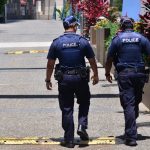Double Jeopardy Laws in New South Wales

The principle of double jeopardy stipulates that a person cannot be tried twice over the same offence.
The rationale is that a person who is acquitted after being put through the ordeal of a criminal trial should be able to move forward with his or her life without the threat of further prosecution – in other words, the state, with all its powers and resources, should not be given ‘two bites of the cherry’.
Double jeopardy in Australia
The protection afforded by the double jeopardy principle in Australia is not absolute.
In New South Wales, amendments to the Crimes (Appeal and Review) Act 2001 (‘the Act’) empower the state’s Court of Criminal Appeal (NSWCCA) to order the retrial of certain acquitted persons on application by the Director of Public Prosecutions (‘DPP’) where there is ‘fresh and compelling evidence’.
Section 100(1) of the Act empowers the NSWCCA to ‘order an acquitted person to be retried for a life sentence offence if satisfied that:
- there is fresh and compelling evidence against the acquitted person in relation to the offence, and
- in all the circumstances it is in the interests of justice for the order to be made’.
Life sentence offences include murder, large commercial drug supply, aggravated sexual assault in company, sexual intercourse with a child under 10 and several terrorism offences.
Section 100 makes it clear the provisions extend to situations where a person has been charged with, and acquitted of, manslaughter, but not where a person was charged with murder and then convicted of manslaughter or some lesser offence.
Section 102(2) explains that evidence is fresh if:
- it was not adduced in the proceedings in which the person was acquitted, and
- it could not have been adduced in those proceedings with the exercise of reasonable diligence.
Subsection (3) provides that evidence is compelling if:
- it is reliable, and
- it is substantial, and
- in the context of the issues in dispute in the proceedings in which the person was acquitted, it is highly probative of the case against the acquitted person.
Subsection (4) clarifies that evidence is not precluded from being ‘fresh and compelling’ by mere virtue of the fact it was not admissible in the earlier proceedings.
The Bowraville murders
The disappearance and murder of three Aboriginal children from the same street in a housing mission near the NSW town of Bowraville over a period of five months in 1990 and 1991 shocked our nation.
The bodies of 16-year-old Clinton Speedy Duroux and four-year-old Evelyn Greenup were found in bushland with head injuries that indicated that they had both been beaten with a blunt instrument.
16-year-old Colleen Walker’s body was never discovered, although her clothes were later found weighed down with rocks in a river that was fairly close to the location of the other bodies.
The police investigation into the murders left a lot to be desired. Although there was only one suspect, Jay Hart, it was a full 10 days after Clinton’s body was found before police secured Hart’s caravan to examine it for evidence.
Only a single tiny drop of blood was found. According to police, it was so small that no analysis could be conducted other than verification it was human blood.
Mr Hart was allowed to keep some barbells which may have been the murder weapon – forensics never examined the items.
Despite these problems, Hart charged with the murders of Clinton and Evelyn, but the prosecution relied entirely on sketchy circumstantial evidence and the trials were inexplicably dealt with separately despite their striking similarities.
Mr Hart was ultimately acquitted.
Retrial sought
On 24 May 2016, it was announced that an application would be made to the NSWCCA under section 100 of the Act to re-try Hart.
The fresh and compelling evidence relied upon was that two delivery drivers reported seeing a white man who matched the Hart’s description standing over an Aboriginal teenager who was lying on the road outside Bowraville on the morning Clinton disappeared.
On 9 February 2017, fresh murder charges were brought against Mr Hart.
On 28 November 2017, a hearing on the application for a retrial began in the Supreme Court, Sydney. It is the first time such a retrial has been sought under the new provisions.
A judgment is expected to be delivered later this year.
Meaning of ‘compelling’
The meaning of ‘compelling’ was considered by the High Court in Frits George Van Beelen v The Queen [2017] HCA 48.
Mr Fritz Van Beelen was found guilty on 19 October 1972 of murdering 15-year old school girl Deborah on 15 July 1971. He appealed his conviction, a retrial was ordered and a second jury returned a verdict of guilty on 12 July in 1973.
Deborah was last seen alive at around 4pm on 15 July 1971 running down a track leading to the beach. Her body was found buried under a layer of seaweed on the beach at around 4:20am the next morning.
The subsequent autopsy suggested the teen had drowned and been sexually assaulted after her death.
Mr Van Beelen was one of a handful of people known to be on the beach on the afternoon of Deborah’s disappearance, and fibres from his jumper matched those on the teen’s singlet.
A director of forensic pathology, Dr Colin Manock, examined Deborah’s body at around 5am on 16 July 1971. The doctor did not measure body temperature because it had rained during the night and he was of the view there was no utility in doing so.
Taking into account the time and contents of Deborah’s last meal, and the state of those contents at the time of examination, Dr Manock testified at both trials that the time of death could not have been later than 4:30pm.
There was uncontested evidence at both trials that Mr Van Beelen had left the beach no later than 4:30pm.
The ‘fresh and compelling’ evidence relied upon by Van Beelen to seek a third trial was contained in a report by Professor of Medicine Michael Horowitz dated 10 February, wherein he opined that estimates of death based on stomach contents are “unequivocally highly erroneous”.
The High Court found that this fresh evidence was of real significance given that time of death was an issue at trial, and that it was in the interests of justice to consider that evidence.
However, the Court ultimately refused Mr Van Beelen’s appeal after finding that it was not ‘compelling’ within the meaning of the law because it did not give rise to “a significant possibility that a properly instructed jury, acting reasonably, would have acquitted the appellant had Dr Manock’s erroneous opinion as to the time of death not been in evidence”.
This was by virtue of the fact that, in the Court’s view, the evidence did not “significantly reduce the improbability of a person other than the appellant being the killer”.
These statements give some guidance of the meaning of ‘compelling’ in the context of section 100.







